Pollution and light dance on the side of the Wilma Theater
Listen-

Patrons at Johnny Brenda's enjoy an afternoon pint. (Lindsay Lazarski/WHYY)
-

Serving local beer and sourcing local ingredients for the menu has been a standard at Johnny Brenda's. (Lindsay Lazarski/WHYY)
-
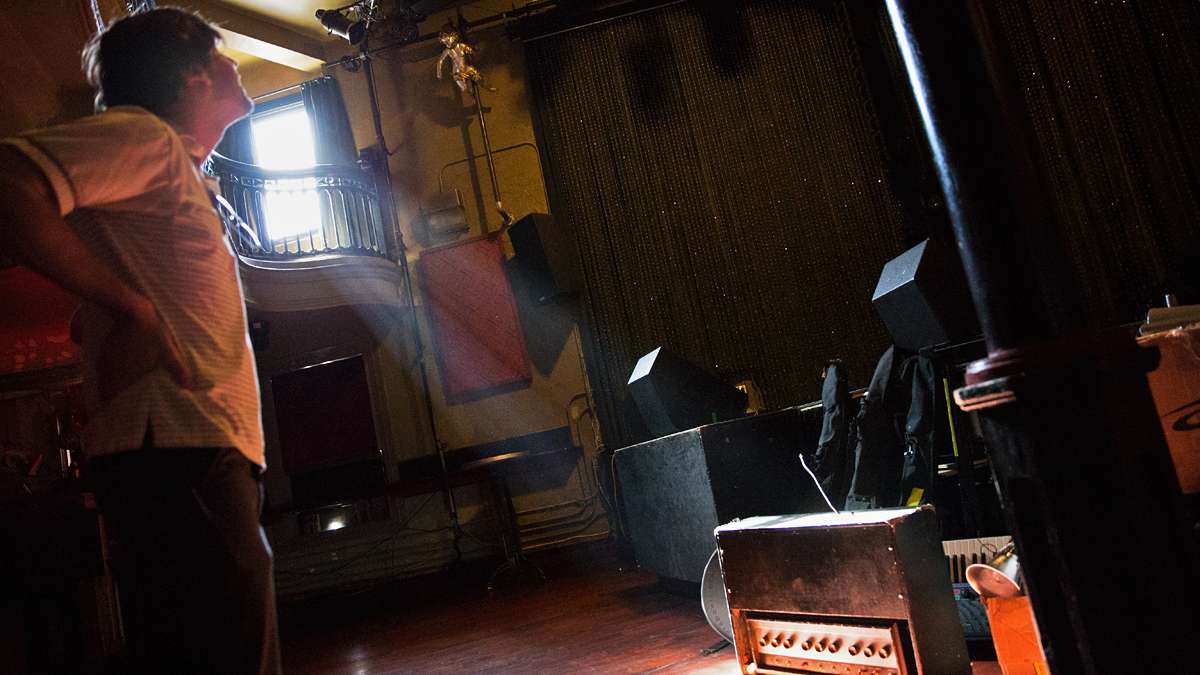
(Lindsay Lazarski/WHYY)
-

. (Lindsay Lazarsky/WHYY, file)
-

Ten years ago, William Reed (pictured) and Paul Kimport walked into a corner bar in Fishtown and walked out with a handshake agreement to buy what has become one of Philly's iconic bars, Johnny Brenda's. (Lindsay Lazarski/WHYY)
-

Bob Achilles (left) and Erik Boardman have a drink at Johnny Brenda's before starting their bartending shifts at another Fishtown pub. (Lindsay Lazarski/WHYY)
-
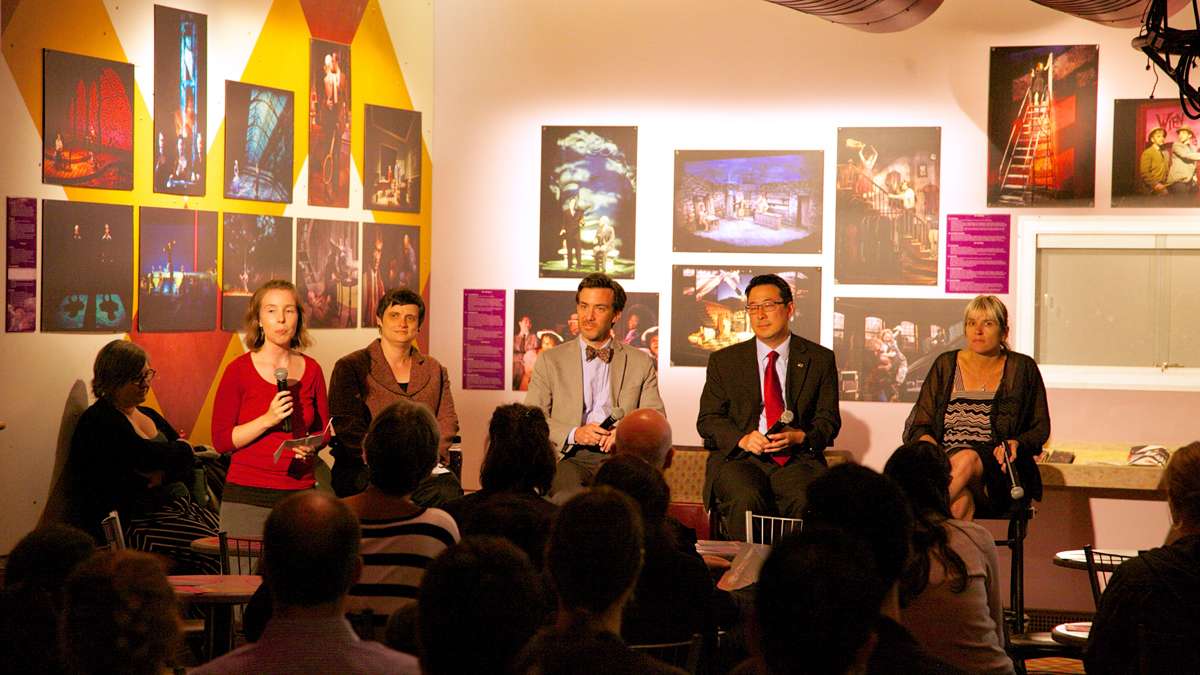
-
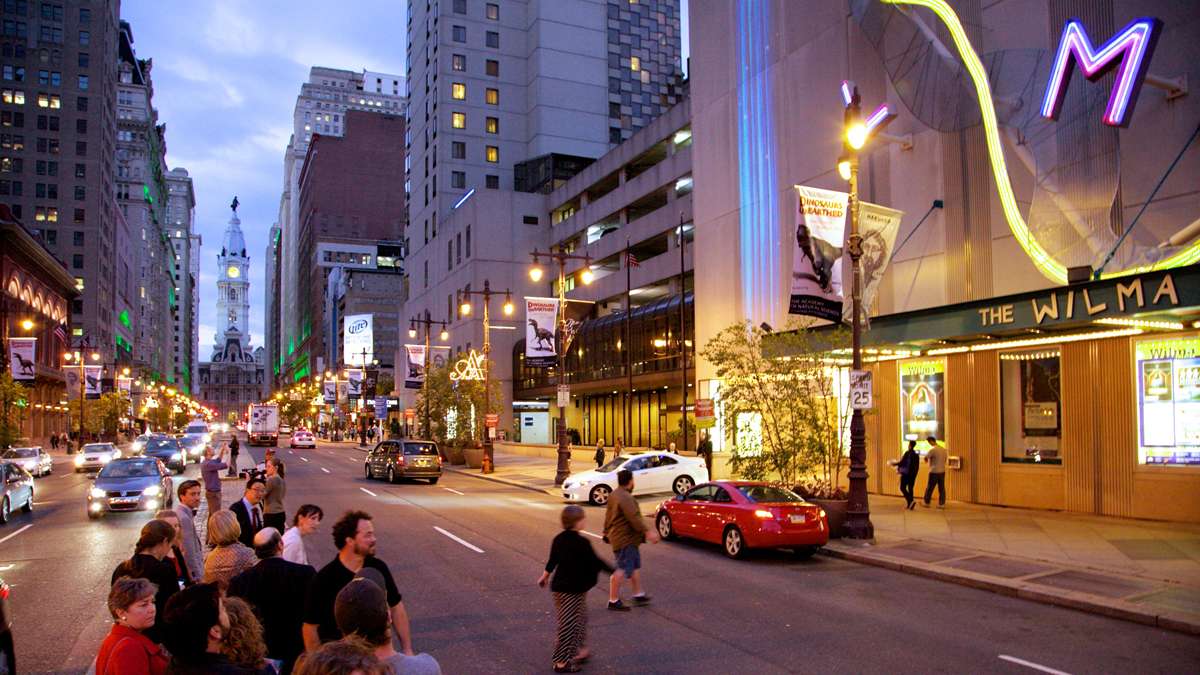
-

-
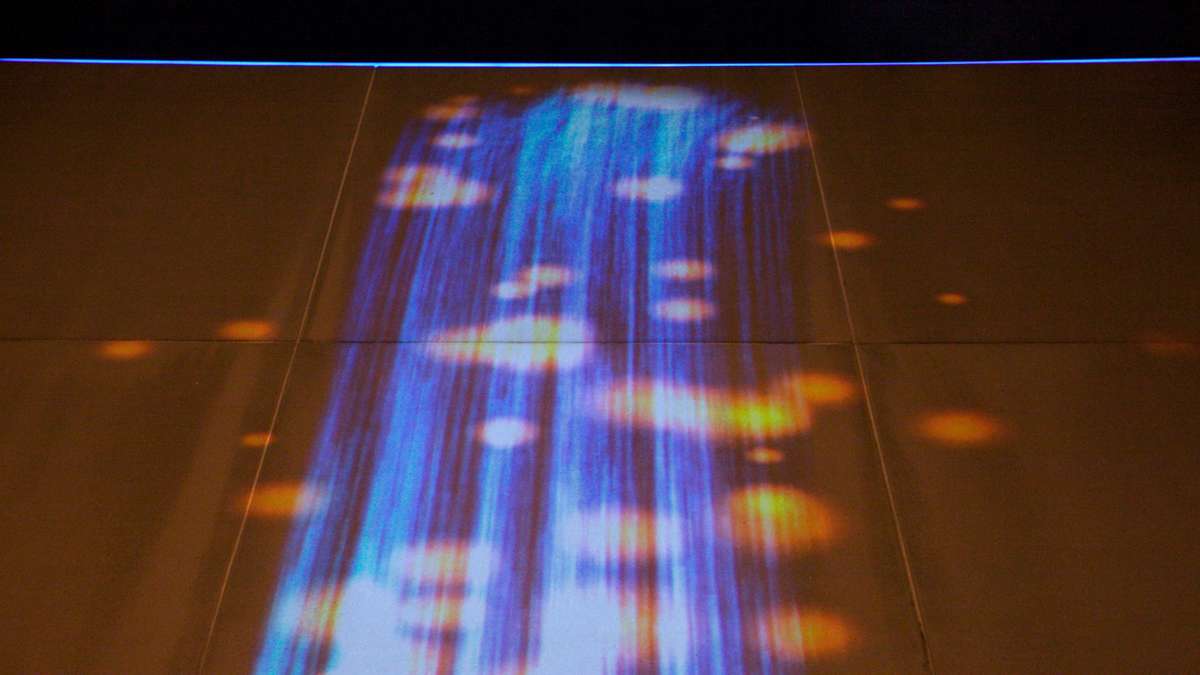
-
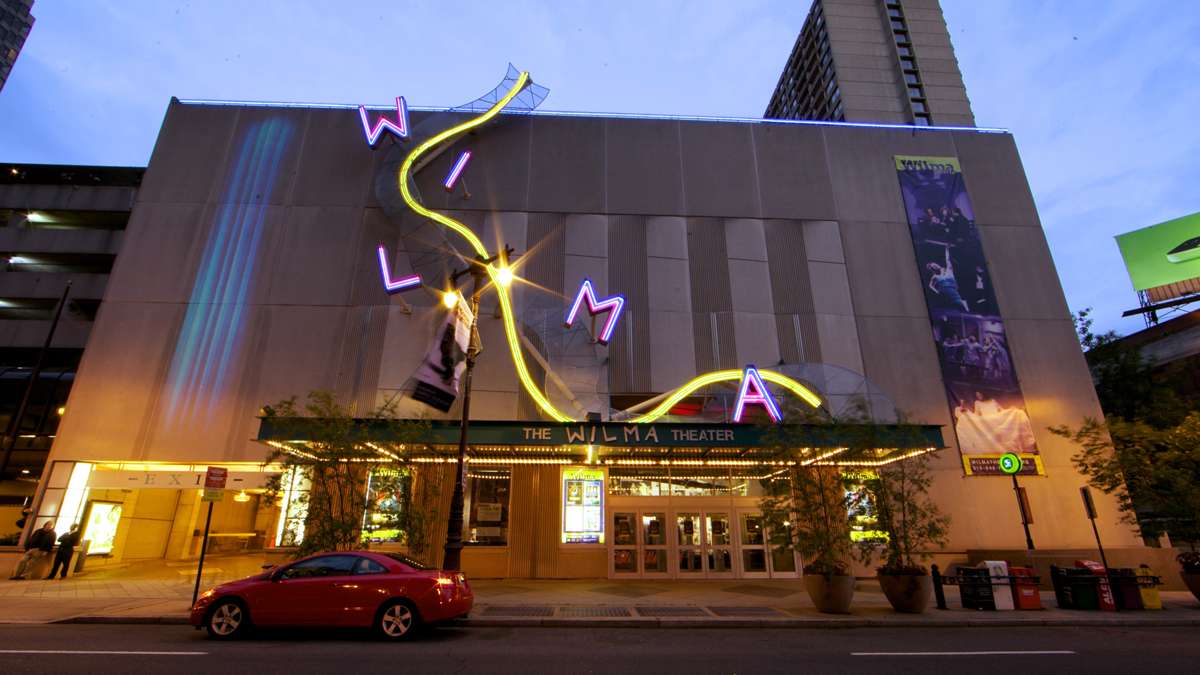
A new, outdoor art installation — projected onto the face of the Wilma Theater — is adding more color to the bright lights along Broad Street in Philadelphia.
The display is a collaboration between New Mexico digital artist Andrea Polli and Philadelphia’s own smoggy air. Most of the time, the “Particle Falls” exhibit will show a flickering blue and white waterfall.
“But if there is a lot of particulate pollution, you start to see orange and red dots flickering over the waterfall, and if there’s really a lot of particulate pollution the waterfall almost transforms to a fireball,” said Polli, who teaches at the Social Media Work Group at the University of New Mexico.
Polli consults with scientists to find visual — and immediate — ways to convey the complexity of issues such climate change. Her Philadelphia exhibited is powered by a nearby air-quality monitor, called a nephelometer
“Sometimes people call it the sniff-o-lometer,” she said. Polli said she used some of the tools used by true scientists, but maintains her exhibit is art, not science.
“Perhaps you could say it’s a citizen science experiment,” she said.
The monitor takes a new reading every 15 seconds.
“It’s really, almost a real time response. So if, for example, you are walking down the street and you happen to light up a cigarette near the nephelmeter you’ll probably see a pretty strong reaction.
A idling truck spewing fumes, or a plane flying overhead, could also set off the color display.
“One of the things in the development of the piece that was kind of a challenge was to figure out how to create something that’s interesting, but without encouraging people to create more particulate pollution,” Polli said.
The Chemical Heritage Foundation (a WHYY underwriter) is sponsoring the exhibit and a panel discussion tonight about the interesection of art and science.
“I think that scientists and engineers sometimes have a hard time conveying complexity. There’s a lot of times a large understanding gap,” said Youngmoo Kim, director of the Expressive and Creative Interaction Technologies (ExCITe) Center at Drexel University
He’s joining Polli during the panel discussion on “Particle Falls.”
“It’s not a static sort of exhibit, it changes based on the environment and the time of day,” Kim said. “As it gets more active people will realize there’s more, so called particulate matter — little particles in the air that people are actually breathing in.”
WHYY is your source for fact-based, in-depth journalism and information. As a nonprofit organization, we rely on financial support from readers like you. Please give today.

